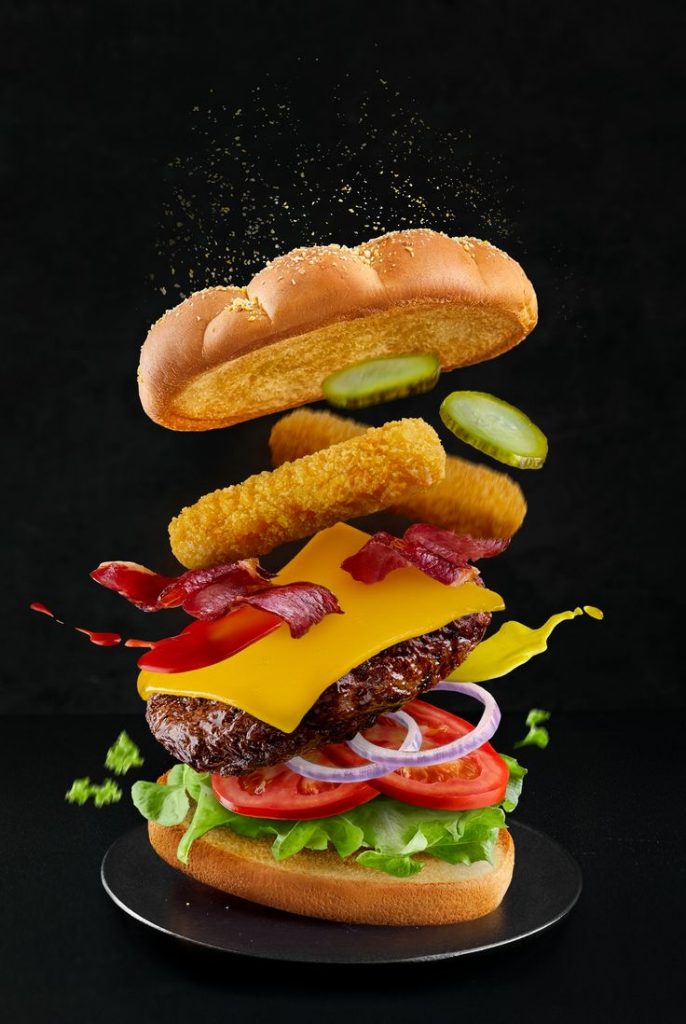Table of Contents
In this blog post, we’ll talk about food photography business, the strategies and pricing models that professional food photographers often employ to transform their passion into a lucrative venture. Furthermore, we’ll discuss how these professionals manage the business of food photography based on client management, copyright issues, and effective marketing techniques to establish and sustain a flourishing food photography business.
How to Get Photography Clients in Dubai
Dubai offers great opportunities for photographers but you need to market yourself strategically. Build an impressive portfolio showcasing your style and skills. Feature high-quality images across various genres like portraits, events, and food on your website and social platforms.
- Join local photographer groups and networking events to meet other creatives and potential clients in person. Attend industry networking events hosted by hotels, magazines, and ad agencies in the city.
- Consider offering promotional or discounted test shoots for emerging brands looking to build their image cost-effectively. This allows them to see your work in action.
- Reach out to restaurants, cafes, wedding planners and bloggers to discuss collaborating on sponsored shoots that raise both your profiles.
- Cold call art directors and creatives at top Dubai ad agencies. While pay may be low, commercial work boosts your experience and exposure.
- Leave business cards featuring handy contact details whenever you are shooting publicly. You never know who may need photographer recommendations.
Food photography pricing
Pricing your food photography services is a crucial aspect of your photography business. Your rates should reflect your skill, experience, and the value you provide to your clients. Here are some considerations for setting your prices:
1. Skill and Experience

Your level of expertise and experience in food photography will play a significant role in determining your rates. As you gain more experience and build a portfolio, you can justify charging higher fees. Trust me just like every other niche in photography the more you get better at the art the more you gain confidence in upping your price.
2. Location
It is very important to consider your location when determining photography rates due to variations in the cost of living and industry standards. The cost of living directly influences a photographer’s overhead expenses, including studio rent, equipment maintenance, and transportation costs. Additionally, different regions may have distinct market demands and competition levels, impacting pricing strategies. Urban areas with higher living costs often witness elevated photography rates compared to rural counterparts. Therefore, a comprehensive understanding of the local economic context and industry benchmarks is essential for photographers to set competitive yet sustainable pricing that reflects both their skill level and the economic realities of their specific location.
3. Equipment and Overhead
When setting photography rates, it’s crucial to factor in equipment costs, studio expenses, and overheads. This includes cameras, lighting, workspace rent, utilities, insurance, and marketing. By considering these aspects, photographers can ensure that their pricing covers all associated costs while still allowing for a profitable margin. This approach guarantees sustainability, equipment upkeep, and ongoing business growth, acknowledging both the financial investment in the profession and the value of the photographer’s expertise and creative services.

4. Market Research
Thorough market research is essential for food photographers to establish competitive yet fair pricing. Analyzing the rates of other professionals in the same geographical area and niche provides valuable insights into industry standards. While aiming to be competitive, it’s equally important to ensure that pricing reflects the unique value and expertise you bring to the table. You need to understand the local market demand, the quality of work offered by other photographers around you. Client expectations also allows you to position their services effectively.
5. Value-Added Services
You need to recognize and leverage value-added services, like food styling, post-processing, or unique approach as elements that justify higher rates. Food styling, for instance, enhances the visual appeal of dishes, contributing to a more enticing final product. Post-processing, including editing and retouching, ensures a polished and professional outcome. Introducing this unique and innovative concepts your creativity becomes a distinctive selling point. Clients often appreciate these supplementary services, and they can differentiate a photographer in a competitive market, warranting higher rates. By highlighting these added values, you not only justify their pricing but also attract clients seeking a comprehensive and exceptional photography experience.
6. Custom Quotes
Tailoring custom quotes for larger or intricate projects is a strategic approach in photography. Recognizing the unique needs of each client and project, you can provide personalized estimates that align with the specific requirements. Factors such as the scale of the project, specialized equipment or skills needed, and the extent of post-processing influence the overall scope and complexity, warranting a customized pricing approach. This ensures fairness for both the you and the client, as they only pay for services directly relevant to their project. Custom quotes reflect a commitment to transparency, professionalism, and flexibility, allowing you adapt to pricing structures to the diverse demands across the market.

How Much Should a Beginner Food Photographer Charge?
When starting out in food photography, it’s important to set competitive rates that reflect your experience level while still earning enough to make it worthwhile. For single images with minimal editing, a beginner can typically charge $15-30 per photo. For a full set of images from a recipe shoot, $100-200 is a reasonable starting point.
Some beginners offer a half or full day on-location test shoot rate of $200-500 to build their portfolios and networks. This allows kitchens and restaurants to see their quality of work. Bundling packages for blogs including a set number of images from multiple recipes can run $400-800.
Additional services like full recipe stylist assistance, video tutorial production or commercial licensing require higher price points. Rates also depend on location, with urban centers generally commanding more.
Always provide high-value results that demonstrate improving skills. Consider offering introductory specials or package discounts to attract new clients as a less experienced food photographer. But avoid underselling yourself too much early on.
Writing A Contract For Your Food Photography Business
Contracts are essential for establishing clear expectations and protecting both you and your clients. A well-structured contract should include the following elements:

1. Scope of Work
Detail the scope of the project, including the number of photos to be delivered, shooting locations, and any additional services you’ll provide.
2. Payment Terms
Clearly outline the payment terms, including the total fee, deposit requirements, and the schedule for payments. Be specific about late payment penalties or fees.
3. Usage Rights
Define how and where the client can use the photos. Specify any restrictions or exclusions, and clarify whether you retain any rights to use the images in your portfolio or for self-promotion.
4. Cancellation and Rescheduling
Establish policies for project cancellation and rescheduling, including any fees associated with these actions.
5. Copyright and Licensing
Clarify the ownership of the copyright and the licensing rights for the images. Make it explicit whether the client is purchasing the copyright or simply obtaining a license for specific uses.
6. Deliverables and Timeline
Specify the format and delivery method for the final images. Set a timeline for delivering the completed work.
7. Liability and Insurance
Address liability and insurance coverage, outlining each party’s responsibilities in case of damage or loss.
8. Dispute Resolution
Include a clause outlining how disputes will be resolved, whether through mediation, arbitration, or legal action.
Client Relations

Maintaining positive client relations is essential for building a successful food photography business. Here are some tips to foster good client relationships:
1. Communication
Effective communication is key. Be responsive, clear, and courteous when dealing with clients, whether it’s through email, phone calls, or in-person meetings.
2. Manage Expectations
Ensure your clients have realistic expectations about the project, timelines, and the final product. Transparency is crucial.
3. Professionalism
Be professional in your interactions, appearance, and demeanor. Treat each client with respect and courtesy.
4. Deliver on Promises
Meet deadlines and deliver on your promises. Clients appreciate reliability and accountability.
5. Follow Up
After completing a project, follow up with your clients to gather feedback and address any concerns. A satisfied client can lead to referrals and repeat business.
Read more on how to start a photography business.

Building a Portfolio For Your Food Photography Business
Building a strong portfolio is a continuous process in the food photography business. Add your best work to your portfolio, showcase a variety of styles and concepts, and regularly update it to reflect your growth and experience.
Marketing Your Food Photography Business
To attract clients and grow your food photography business, invest in marketing efforts. Utilize social media, your website, networking, and other marketing channels to promote your services.
Stay Informed

Keep up with industry trends and continue learning. Join professional organizations, attend workshops, and follow influential food photographers to stay informed about the latest techniques and developments in food photography.
With a solid understanding of the business side of food photography, you can set the right pricing, create clear contracts, and foster positive client relationships, ultimately helping your food photography business thrive. Now pick up your camera and go hit that shutter button!!!!
Check out our Food Photography services if you are in Dubai, United Arab Emirates and feel free to contact us for more inquiries.

